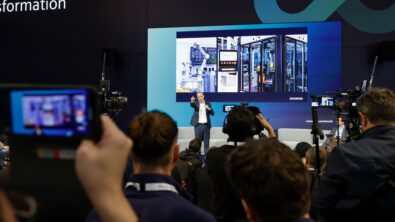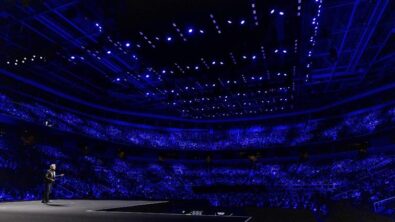Why The Ribbon Bar is Right
The advancements in the upcoming Solid Edge with Synchronous Technology release are causing a lot of discussion. Synchronous Technology is getting a good part of the interest but this is only part of the transformation users will see.
Putting Synchronous Technology aside, customers that continue to work with the traditional history based Solid Edge technology will still see the new Microsoft Office Ribbon based user interface. Changing the UI can have a big impact on software users so it can be a hot topic.
Long before the changes happening now with many CAD user interfaces, Microsoft spent a lot of time iterating on a design that would justify their own changes with sufficient improvement in ease-of-use and productivity. If you want to know more about this, a good blog on the story of the ribbon as well as this Slide share presentation below:
Now interface design is hard because you have so many different types of software users. So it is not surprising there is still a lot of debate on how successful Microsoft is with this new Ribbon Bar design. I’ve been using it for a while and do find it more productive but anytime you change UI, there is a learning curve.
Microsoft’s hope is for Ribbon Bar implementers to embrace the following principles (From Microsoft’s Office 2007 UI for developers)
Focus. The user’s attention should be on the content, not on the UI. The results-oriented approach allows the user to perform sophisticated formatting and advanced tasks without diverting their attention from the document or content on which they are working.
Context. The contextualization of as many commands and properties as possible is crucial. Increase the user’s sense of mastery by reducing the number of choices presented at any given time. Reduce the command space by eliminating redundant or seldom used features.
Efficiency. Focus on efficiency rather than scope. Users must be able to find the most powerful features for the task quickly and easily. A small gain in the scope of features used is not worth a significant loss in the efficient use of the features.
Consistency. A results-oriented user experience is best accomplished by clearly providing intuitive ways to solve different problems. When applying tools to tasks, flexible consistency is desirable; homogeneity is not.
Permanence. Clearly defined access to tools ensures better usability. Ambiguity is reduced by establishing permanent homes for groups of features. A consistent-location UI is favored over a “smart” UI.
Predictability. The Microsoft Office applications offer a long and rich legacy of acceptance, upon which you can build successful UI innovation. Straightforward design ensures continued user comfort and maximized results. Favor the predictable over the novel.
Solid Edge with Synchronous Technology and many of the other CAD programs either following Microsoft’s style guide for Ribbon UI (Solid Edge ST) or implementing their own ribbon like interfaces we are seeing much of this ribbon discussion moving to the various CAD articles, blogs and forums. We CAD users have a lot of opinions on the subject. Even within Siemens, you will notice we have taken different directions for NX and Solid Edge with Synchronous Technology.
Catalyst had an interesting interview on the new AutoCAD Ribbon Bar and other CAD products are using it too. You can find a few blogs on the subject. Here is one on “Why the Ribbon is Wrong” which triggered a lively discussion. Its an interesting debate… do a custom UI for your CAD system or follow what is becoming a Windows standard?
Why the Ribbon is Right for Solid Edge with Synchronous Technology
Like many readers out there, I’ve used a lot of CAD systems over the years. I’m also spending significant time in Office 2007 or digging through the Microsoft Style guide or looking how to best optimize our own Solid Edge UI (we have UI experts that do this too), Like everyone else, I’ve got opinions on the subject.
The fact is, CAD functionality is ever increasing so having a better ways of organizing access to this functionality is something we are all looking for. The Ribbon Bar provides a way to make the most common functionality both easy to access and quickly visible to new users. Key functionality is a big icon and hard to miss. Less common functionality can still be found with a single click and smaller icons. Functionality unrelated to the task at hand can be moved out of the way (to a different group or tab) avoiding the visual clutter. Compare this to thinks like pull down menus where the best you might be able to do is put the more important things on the top of the list or worse, start creating sub menus.
Now I’m not saying everything is perfect with the Microsoft standard. I’d love for it to allow for more customization (although that has risks too). Depending on how you work, you may have different ideas on how it could be better. I do think the Ribbon is the right direction but when it comes to UI, there is no perfect solution.
So first, we have a standard, and one which has been fairly well researched to be as easy-to-use and productive as possible. The key, of course, is making sure the commands are exposed in the best possible way in the Ribbon Bar. It’s my opinion that many issues people have had with other Ribbon Bars is not so much with the Ribbon Bar concept but with how their software’s functionality gets implemented in this context. I know we spent most of our time working on getting our layout organized in the best possible way with the best possible controls. We got some great feedback from beta customers too and continue to discuss further UI optimizations going forward. I’m looking forward to the product release to see how our customers grade us.
The second point with the Ribbon bar, especially those that follow the Microsoft Ribbon Bar standard is the facility at which you can move between it and other products. Now I know there are still some CAD users than spend ALL day in their CAD product and would love everything to be optimized for just that work. However, most of us are moving between Word or Excel or PowerPoint or tools like Solid Edge. If you use Microsoft Office 2007, learning the Solid Edge with Synchronous Technology UI is just not that hard. If you are a new user, you are focused on learning CAD, not CAD AND the CAD UI. If you know CAD and are familiar with the Ribbon Bar, the transition is even faster. Even moving between ribbon based CAD products can become easier.
The last point is important. Synchronous Technology makes multi-CAD environments much easier. So while I think the new Ribbon Bar will increase existing user productivity, I also think it’s the best possible UI for the occasional Solid Edge with Synchronous Technology user – these people that don’t have the time to learn each and every custom CAD UI.



